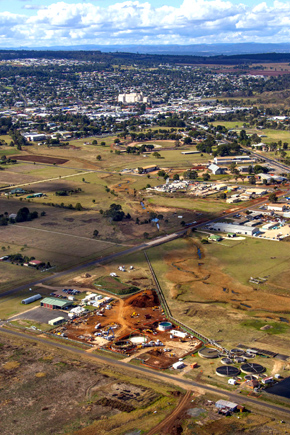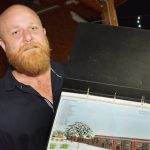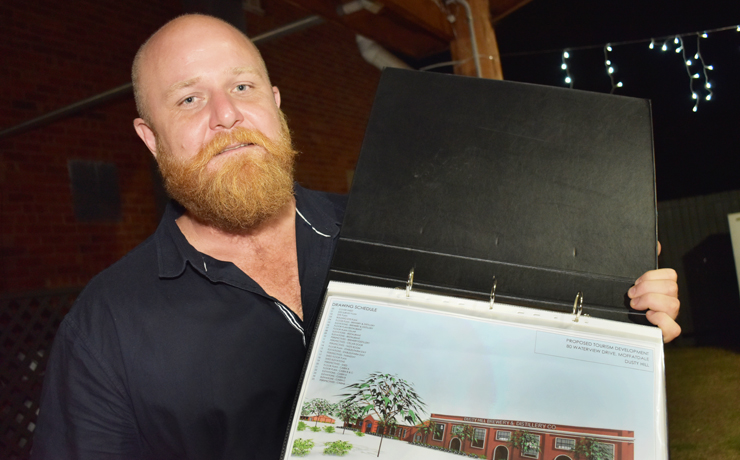
June 29, 2015
by Dafyd Martindale
The South Burnett Regional Council’s $63 million 2015-2016 Budget is better than it looks.
But to find its hidden treasures you’ll need to wade through the 2015-2016 Budget documents with a copy of last year’s close at hand.
Each year when a Council hands down a Budget, it’s now also obliged to hand down proposed Budgets for the succeeding two years plus a long-term financial forecast for the coming decade.
This helps ensure Councils which might be tempted to bring down short-term, populist Budgets are well aware what the consequences of any poor decisions might be.
Last year when the SBRC handed down its 2014-15 Budget, it forecast that ratepayers would be facing a 2.75 per cent rate increase in 2015-16 (which has turned out to be true).
This would be followed by 4.5 per cent annual rate increases from next year onwards.
The SBRC also forecast it would face a 3 per cent annual increase in its operating costs.
But today’s updated long-term financial forecast has revised both of these figures downwards.
Because of efficiencies the Council has found over the past 12 months, future rate rises are now forecast to be 3.5 per cent (not 4.5 per cent) from 2016-17 onwards.
And operating costs will only rise by 2.5 per cent – not 3 per cent – per annum.
These two small changes will add up to fairly significant savings for ratepayers over coming years if the Council maintains the same financial discipline it’s shown since 2009.
The Council has also embarked on a long-term program of reducing its estimated $50 million land bank by putting selected properties out to tender in an effort to sell them quickly and return them to being “productive” (ie rateable).
The money generated from these sales is then ploughed back into capital works.
This year, the sale of the remaining 19 lots on the Boondooma Lakes Estate and the sale of a few other blocks in farming areas helped generate an extra $700,000.
This bonus is being tipped into this year’s road maintenance budget, while the formerly “dead” blocks are now contributing rate revenue to help hold down future rate rises for everyone else.
Against this, the latest long-term forecast also tips the $200 per annum road levy – which hasn’t changed since it was introduced in 2013 – will start being indexed from the 2016-17 Budget onwards.
This measure is designed to ensure the levy retains its purchasing power.
But a 2.5 per cent increase on a $200 annual charge (about $5) is much less than 1 per cent increase on a year’s worth of rates (the amount Council now forecasts it can reduce next year’s rate rise by).
So this shouldn’t be something that causes anyone pain.
Today Mayor Wayne Kratzmann told the media he felt “very comfortable” with the Council’s financial position.
Operational efficiencies and the prudent course the Council has taken over the past five years have put the region in a much better position to face the uncertainties of the future than some other Councils which had adopted a more reckless course.
He said he was proud that despite tough times in the economy and steep Federal and State Government funding cut-backs, the Council has been able to maintain all the Region’s services and trim staffing levels through natural attrition without the need for lay-offs or redundancies.
The Council has also undertaken a significant capital works program during his term, and the results of this will become apparent during the coming year as most of these projects come to fruition.
Major projects include:
- An end to Blackbutt CBD’s flooding problems
- The completion of Nanango’s CBD upgrade
- A major upgrade to Kingaroy’s Glendon Street car park
- The construction of the Kingaroy-Kilkivan Rail Trail
- The opening of the new Murgon Aquatic Centre
- New footpaths and other CBD upgrades for Proston
- A $60,000 spend on beautification in Kumbia
- The start of “normalising” the Memerambi Estate
Less visible – though probably even more important – are the tens of millions spent on upgrades to the region’s ageing water and sewage systems; bridge replacements; new footpaths; new waste transfer stations; and the maintenance and upgrading of the region’s extensive road network.
The work the Council needs to do on the region’s infrastructure is far from over, of course.
It will probably be working on replacing water treatment plants, sewage plants and bridges for the next decade. And road maintenance is a job that never ends.
But it has made a good go of it over the last five years.
And it is continuing to plough ahead on rebuilding a newer, shinier South Burnett for the 21st century which preserves the best of our past while it repositions our region for growth into the future.
Councillors deserve credit for approaching this task in an intelligent, responsible way.
- Related article: ‘A Budget For The Future’























